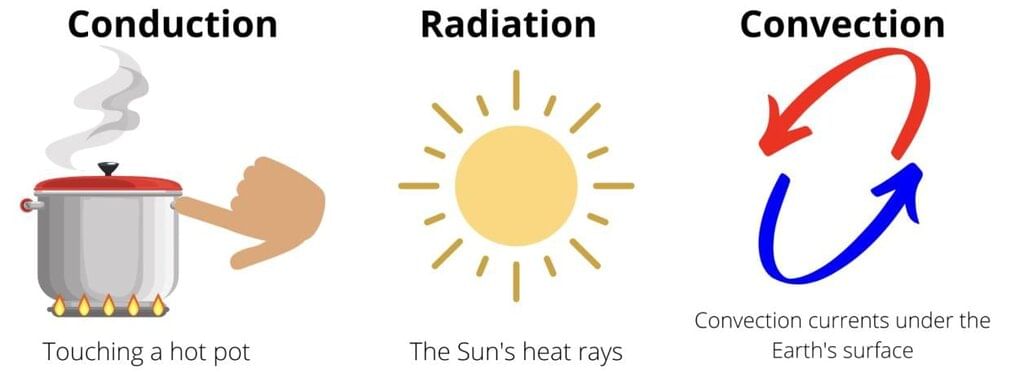The Ever-Evolving World of Science Class 7 Notes Science Chapter 1 Free PDF
Introduction
- Science is everywhere—from the tiny cells inside a leaf to the grand movements of the sun and stars, inviting you to test materials at home and uncover how water flows underground.
- Each chapter is a new adventure, designed to challenge your thinking, expand your knowledge, and turn you into a little explorer making your own discoveries.
- Simple observations spark big ideas—just as paper planes led to real scientific studies of flight, your everyday experiments can inspire future discoveries.
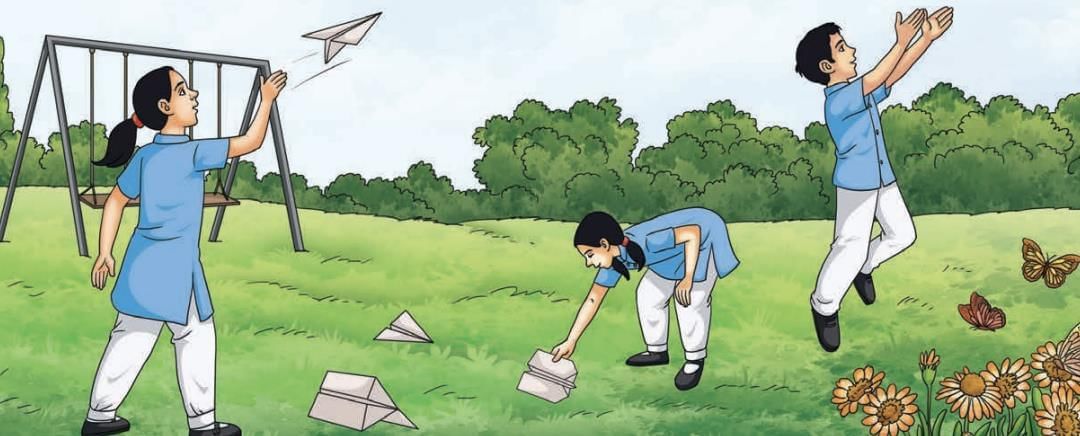
Let's explore! As you turn each page, let your imagination soar—explore new ideas, discover wonders, and reach for the skies!
Science is an Adventure
- Exploring the World: Science helps us understand both small and big things. For example, we can study tiny cells inside a leaf or the way the sun and stars move in the sky.
- Asking Questions: Science starts with curiosity. When you wonder “why” or “how” something happens, you’re thinking like a scientist.
- Doing Experiments: Experiments let you see how things work. For example, testing materials at home can teach you about their properties.
- Learning Takes Flight: The textbook compares learning to a butterfly fluttering or a paper plane flying. Just like a paper plane inspired scientists to study flight (like how bird wings led to airplanes), your curiosity can lead to new discoveries.
- Imagination is Key: As you read this book, let your imagination soar. Each page is a chance to explore new ideas and find wonders in the world.
Exploring Science Beyond Facts
To answer these, it’s important to step beyond the classroom and experience the world through activities and experiments. These hands-on experiences help build a deeper understanding of our environment and our place on Earth.
Science is not just about discovery; it’s also about responsibility. As young explorers, you will see how human activities affect the natural world and our society. You will learn how science can help solve environmental challenges and contribute to a sustainable future.
Science as a Way of Thinking
Science is a process—a way of thinking that encourages curiosity, asks questions, and stays open to the unknown. Exploration is not just about discovering new facts or learning about nature.
In Grade 7, the focus will be on asking deeper questions like:
How do things work?
Why do events happen the way they do?
What can we learn from patterns in nature?
Step Outside the Book
To understand science, you need to explore the world. Doing experiments and observing nature helps you learn better than just reading.
A Never-Ending Journey
Science is always growing. Every discovery leads to new questions, making it an ongoing adventure.
Responsibility to Nature
Science shows how human actions affect the environment. For example, pollution can harm nature, but science can help us find ways to protect the planet and make it more sustainable (better for the future).
Connecting with Society
What we do affects the world, and science helps us understand our role in keeping nature and society balanced.
Let's Revise: Why is it important to "step outside the book" when learning science?
 View Answer
View Answer 
Ans: Because observing nature and doing experiments help us understand science better than just reading about it.
Exploring Substances
We often interact with various materials in our daily lives—fruits, clothes, spices, utensils—without stopping to think why they behave the way they do. Science encourages us to observe, question, and understand these common occurrences by studying the properties of materials. Let’s look at a couple of everyday examples and the science behind them:
- Why are some fruits sour?
- What happens when we wash a haldi (turmeric) stain from our uniform?
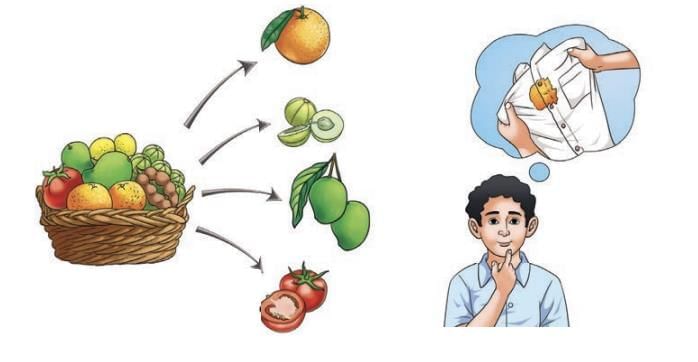
- These simple questions are not just curiosities—they are gateways into deeper scientific ideas. By investigating the familiar, we begin to understand important concepts in chemistry and develop a scientific way of thinking.
Exploring Properties of Materials
After studying basic properties of everyday materials, the book moves on to experiments with electric batteries, wires, and lamps.
Objective: To discover what kinds of materials allow current to pass and make a lamp glow.
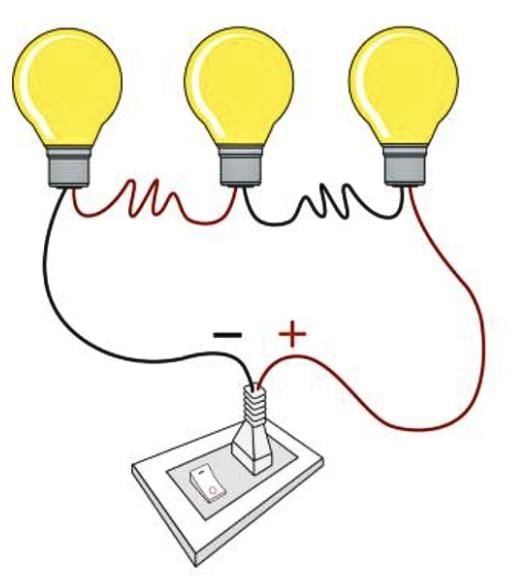
This exploration helps us to:
Classify materials based on their properties (like conductivity).
Enter the study of metals and non-metals.
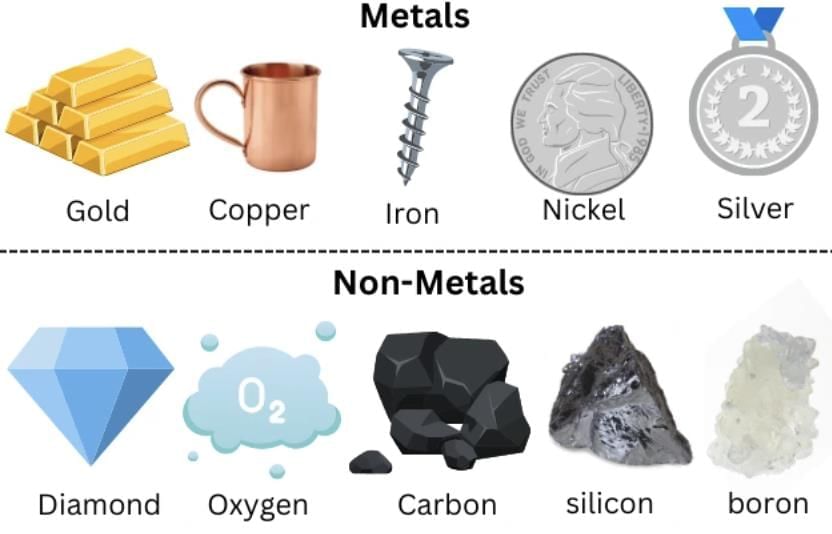
We also observe that devices like torch batteries eventually stop working.
This leads to the study of changes in materials.
- What are Changes?: The world is always changing. Some changes we can see, like ice melting, and some we can’t, like water moving underground.
- These changes differ in nature:
Some are physical (like melting ice)
Some are chemical (like ripening of fruits or battery discharge)
Some happen quickly (melting), others are slow (weathering of rocks)
- Some changes are reversible (e.g., melting ice).
- Others are irreversible (e.g., cooking food or a used battery
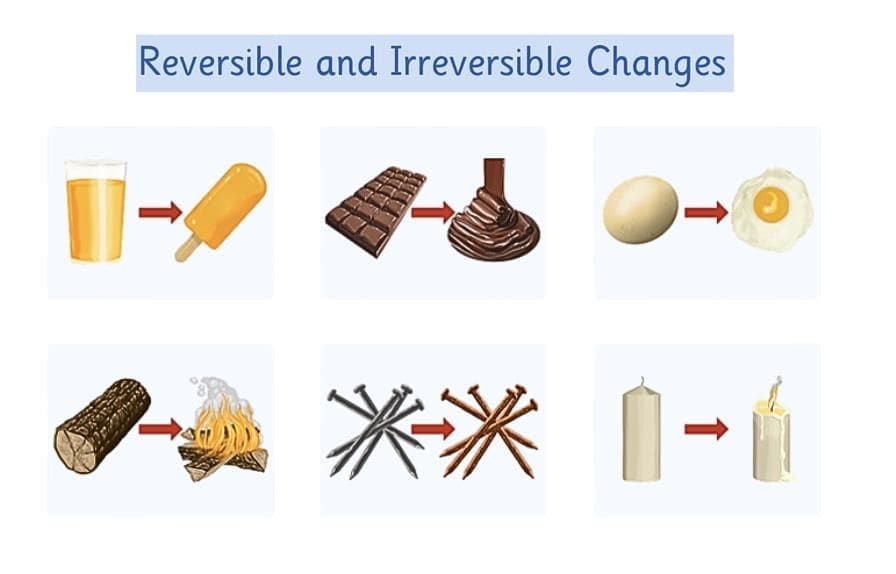
Let's Revise
Q: What is the importance of studying the conductivity of materials?
 View Answer
View Answer 
Ans: Studying conductivity helps us classify materials as conductors or insulators and understand how electric circuits work.
Q: Why are some changes in materials considered irreversible?
 View Answer
View Answer 
Ans: Some changes, like cooking food or the discharge of a battery, cannot be undone, which makes them irreversible.
Understanding Changes and the Role of Heat
Heat makes things change: it can melt ice into water or boil water into steam, showing how energy moves into materials.
By exploring these changes, you’ll discover how heat helps in everyday activities like cooking and how it powers machines.
1. We observe many changes around us in daily life, such as:
Ice melting into water
Fruits ripening
Rocks breaking into pebbles
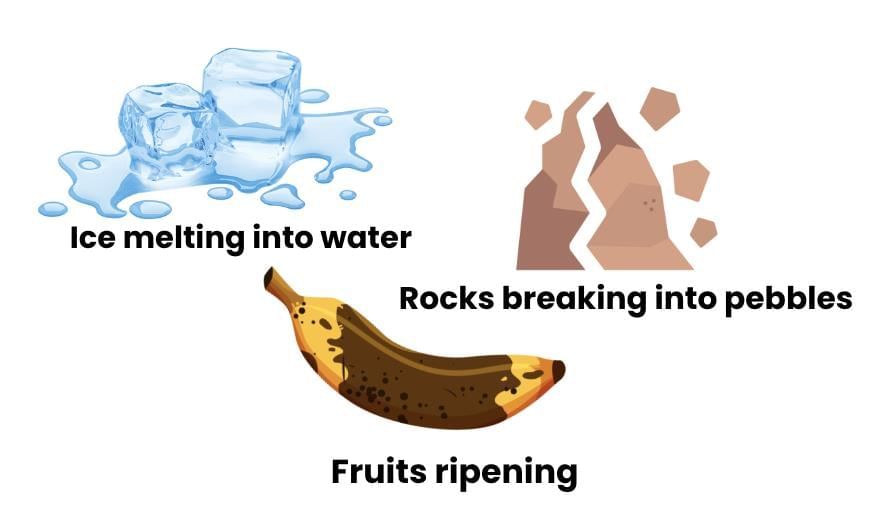
2. Role of Heat in Causing Changes
Heat often causes or speeds up changes in materials.
Examples:
Ice cube melting on a warm day
Massive glaciers slowly melting over years
These examples show how heat affects the state and structure of materials.
3. Introduction to Heat Transfer
To understand how these changes occur, we explore the concept of heat transfer:
Heat always flows from a hotter object to a colder one
This flow of heat leads to changes in temperature and state of substances
4. Heat and the Water Cycle
The Water Cycle is a perfect example of how heat drives natural processes:
Evaporation: Heat from the Sun causes water in oceans, lakes, and rivers to evaporate
Condensation: Water vapor cools in the atmosphere and forms clouds
Precipitation: Water falls as rain
Infiltration: Rainwater seeps into the ground and continues the cycle
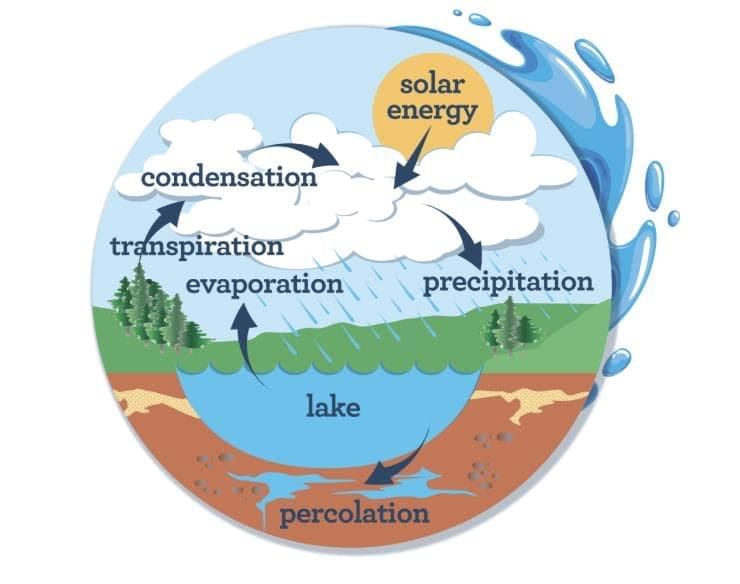
Let's Revise
How does heat play a role in the water cycle?
 View Answer
View Answer 
Ans: Heat from the Sun causes water to evaporate, and as it cools, it condenses into clouds and eventually falls as rain, continuing the cycle.
Changes in Living Things
Not all changes are in materials—our bodies also undergo changes, especially during middle-school years (puberty).
1. Life Processes: Staying Alive
Living things carry out certain vital activities called life processes, which help them survive. In animals (including humans)
Eating (nutrition)
Breathing (respiration)
Blood circulation
Growth and reproduction
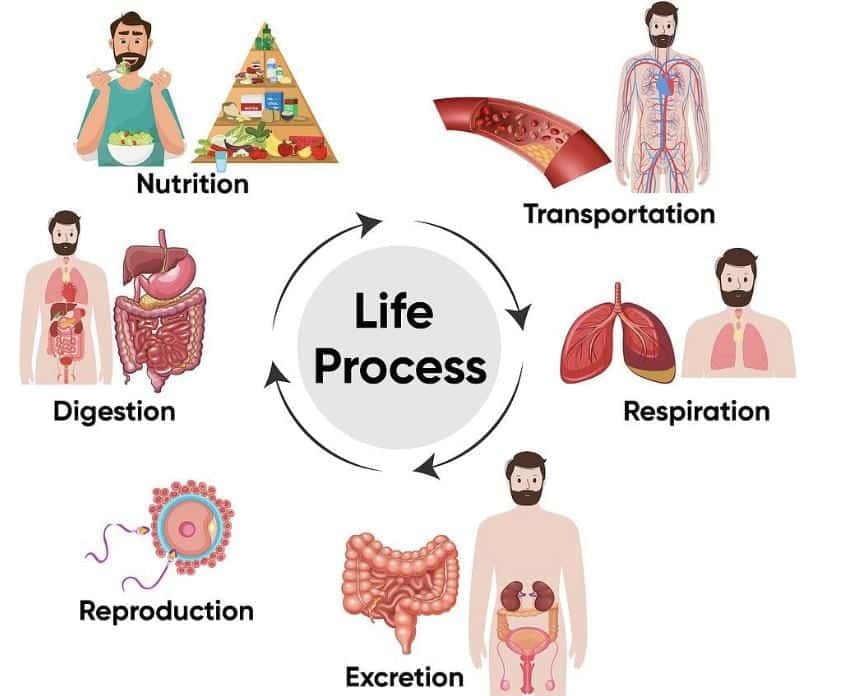
2. Plants Also Undergo Life Processes
Life processes are not limited to animals:
Plants also need food to grow (they make their own through photosynthesis).
They undergo respiration, though differently from animals.
They also grow, reproduce, and respond to changes in their surroundings.
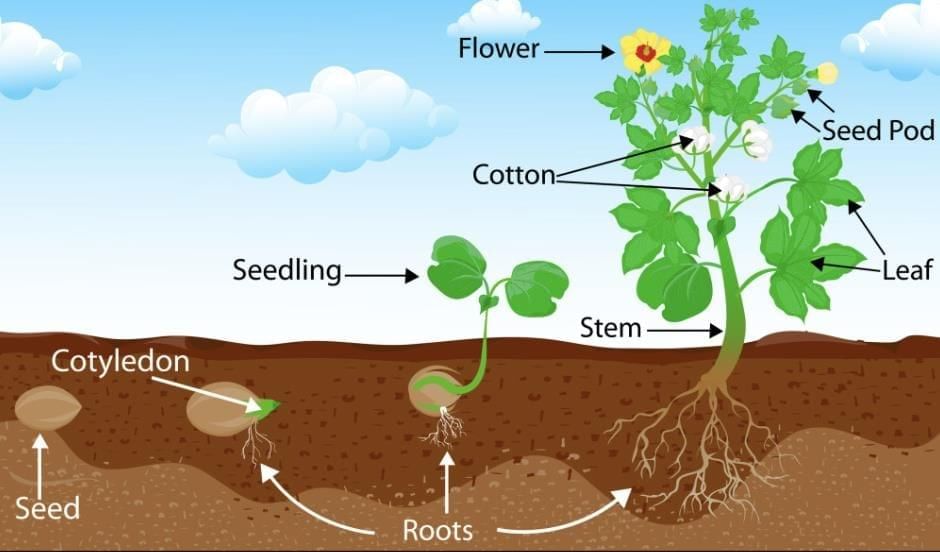
4. The Bigger Picture
Over millions of years, life on Earth has evolved into complex, interdependent systems.
These systems are balanced, ensuring survival for a wide variety of organisms.
Understanding life processes helps us:
1. Know how our bodies work
2. Stay healthy and aware of changes
3. Appreciate how all living things—plants, animals, and humans—are connected through nature’s systems
Let's Revise
What are life processes, and why are they important for living things?
 View Answer
View Answer 
Ans: Life processes like nutrition, respiration, and reproduction help living things survive, grow, and maintain their bodies.
Measuring Time
What is Time?
Time helps us organize our day, like knowing when to go to school or sleep.
How We Measure Time:
- Today, we use clocks and watches to tell time.

- Long ago, people used the sun’s shadows to measure time.
- For example, they looked at how shadows moved as the sun changed position in the sky.

Time in Daily Life
Time affects when we wake up, eat, or sleep, and it’s connected to nature, like day and night.
Why It Matters?
Understanding time helps us plan our lives and learn how nature works, like how day and night happen.
Light and Shadows
Importance of Light:
- Light helps us see the world around us.

- We use light to do things like read at night or play with shadows (like making shadow puppets).
Shadows in Nature:
- Shadows happen when something blocks light.

- The Earth and Moon can cast shadows, causing eclipses (when the sun or moon is blocked).
- Examples:
- Long ago, people used shadows to tell time by watching how they moved.
- Today, we use light in many ways, like in bulbs or lasers.
Earth’s Movements
How the Earth Moves?
- Rotation: The Earth spins on its axis (an imaginary line through its center) once every 24 hours, causing day and night.
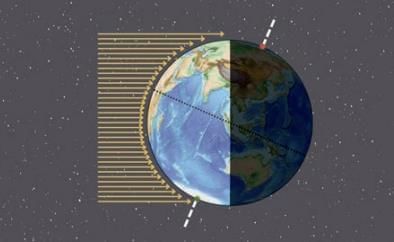
- Revolution: The Earth moves around the Sun once every year, causing seasons.
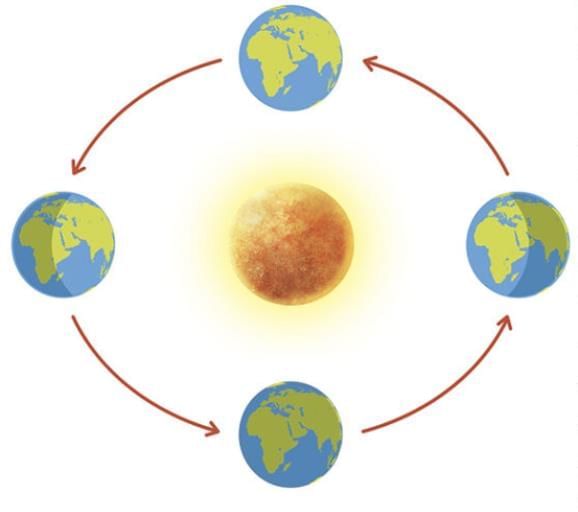
Moon’s Movement
The Moon goes around the Earth, which affects things like tides and how we see the Moon’s phases.
Effects on Life:
- Day and night happen because the Earth rotates, giving us time to work and rest.
- Seasons (like summer or winter) happen because of the Earth’s revolution around the Sun.
- Eclipses happen when the Earth or Moon blocks sunlight, creating shadows in space.

Let's Revise
How do Earth's movements affect our daily life?
 View Answer
View Answer 
Ans: The Earth's rotation causes day and night, while its revolution around the Sun creates seasons like summer and winter.
Points to Remember
- Science is an adventure where you ask questions, do experiments, and explore the world.
- Science is a process of thinking, observing patterns, and being curious about how things work.
- All sciences (physics, chemistry, biology, earth sciences) are connected, and ideas from one help us understand others.
- Materials have different properties, like conducting electricity, and we group them as metals or non-metals.
- Changes can be reversible (like ice melting) or irreversible (like a fruit ripening).
- Heat causes or speeds up changes, like melting ice or evaporating water in the water cycle.
- Living things (humans, animals, plants) go through changes and need processes like eating and breathing to survive.
- Time is measured with clocks today, but long ago, people used shadows from the sun.
- Light helps us see and understand the universe, and shadows cause eclipses.
- The Earth’s rotation causes day and night, its revolution causes seasons, and the Moon’s movement affects tides and eclipses.
Difficult Words and Their Meanings
- Curiosity: Wanting to know or learn more about something, like wondering why the sky is blue.
- Properties: The qualities of something, like whether it’s hard, soft, or conducts electricity.
- Classifying: Sorting things into groups based on what they’re like, such as grouping materials as metals or non-metals.
- Reversible: A change that can go back to its original form, like water freezing into ice and melting back into water.
- Irreversible: A change that cannot go back, like a fruit becoming ripe.
- Evaporates: When a liquid, like water, turns into a gas and rises into the air, like water disappearing from a puddle.
- Nutrients: Things in food that help living things grow and stay healthy, like vitamins or proteins.
- Eclipses: When one object in space blocks light from another, like the Moon blocking the Sun during a solar eclipse.
- Rotation: When something spins around a center point, like the Earth spinning to cause day and night.
- Revolution: When something moves in a circle around another object, like the Earth moving around the Sun.
- Sustainable: Doing things in a way that keeps the environment healthy for the future, like using less plastic.
FAQs on The Ever-Evolving World of Science Class 7 Notes Science Chapter 1 Free PDF
| 1. What is the importance of science in understanding the world around us? |  |
| 2. How do changes in living things occur according to scientific principles? |  |
| 3. What are some common ways to measure time in scientific experiments? |  |
| 4. How does the study of light and shadows contribute to our understanding of science? |  |
| 5. What role do Earth's movements play in scientific observations and studies? |  |


